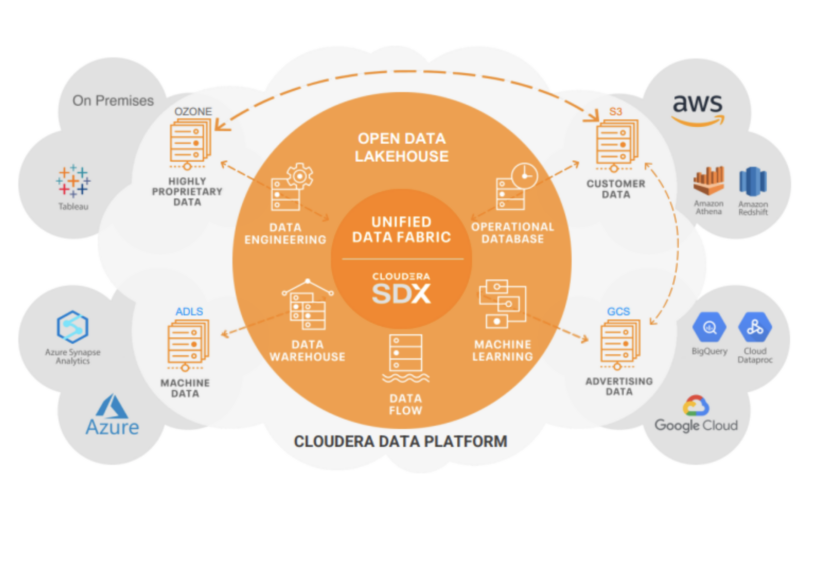Data is the fuel that drives government, enables transparency, and powers citizen services. But while state and local governments seek to improve policies, decision making, and the services constituents rely upon, data silos create accessibility and sharing challenges that hinder public sector agencies from transforming their data into a strategic asset and leveraging it for the common good.
A simple example from a recent article in StateTech makes this case. It outlines a scenario in which “recently married people might want to change their names on their driver’s licenses or other documentation. That should be easy, but when agencies don’t share data or applications, they don’t have a unified view of people. As such, managers at different agencies need to sort through multiple systems to make sure these documents are delivered correctly—even though they all apply to the same individuals.”
That’s just the tip of the iceberg. Agencies are plagued by a wide range of data formats and storage environments—legacy systems, databases, on-premises applications, citizen access portals, innumerable sensors and devices, and more—that all contribute to a siloed ecosystem and the data management challenge.
For state and local agencies, data silos create compounding problems:
- Inaccessible or hard-to-access data creates barriers to data-driven decision making.
- Legacy data sharing involves proliferating copies of data, creating data management, and security challenges.
- Data quality issues deter trust and hinder accurate analytics.
- Disparate systems create issues with transparency and compliance.
- Citizens who have negative experiences with government services are less likely to use those services in the future.
- Lack of sharing hinders the elimination of fraud, waste, and abuse.
Modern data architectures
To eliminate or integrate these silos, the public sector needs to adopt robust data management solutions that support modern data architectures (MDAs). MDAs are key to enabling the public sector to realize the vision to make all data visible, discoverable, and accessible to authorized users and systems, across departments, agencies, and partners.
MDAs include the following key architectures:
- Data Fabric: A data fabric orchestrates disparate data sources intelligently and securely in a self-service manner, leveraging data platforms such as data lakes, data warehouses, NoSQL, translytical, and others to deliver a unified, trusted, and comprehensive view of customer and business data across the enterprise to support applications and insights. (Forrester)
- Data Lakehouse: Data lakehouses integrate and unify the capabilities of data warehouses and data lakes, aiming to support artificial intelligence, business intelligence, machine learning, and data engineering use cases on a single platform. (Gartner)
- Data Mesh: A type of data platform architecture that embraces the ubiquity of data in the enterprise by leveraging a domain-oriented, self-serve design. A data mesh supports distributed, domain-specific data consumers and views data as a product, with each domain handling its own data pipelines. (Towards Data Science)
Solutions that support MDAs are purpose-built for data collection, processing, and sharing. These solutions deliver advanced analytics, AI, and ML capabilities with the security, scalability, and flexibility required by today’s public sector operations and the massive amounts of data produced and consumed.
Deploying modern data architectures
Cloudera Data Platform (CDP) is a hybrid data platform with hybrid cloud capabilities and a number of other technologies and multifunction analytics to help public sector agencies deploy a modern data architecture that breaks through data silos and solves today’s public sector data challenges. This is the platform for the future data ecosystem as described by Gartner:
“The future data ecosystem should leverage distributed data management components—which may run on multiple clouds and/or on premises—but are treated as a cohesive whole with a high degree of automation. Integration, metadata and governance capabilities glue the individual components together.”

CDP provides the freedom to securely move applications, data, and users bi-directionally between the data center and multiple data clouds, regardless of where the data lives.
In addition, we offer features for data and workload migration, and metadata management to meet the most stringent demands of our customers, across all environments.
To learn more about breaking down silos in the public sector with modern data architectures, watch our recent webinar “Turn Siloed Data into Strategic Assets” with Cloudera Solutions Engineer John Azariah.



